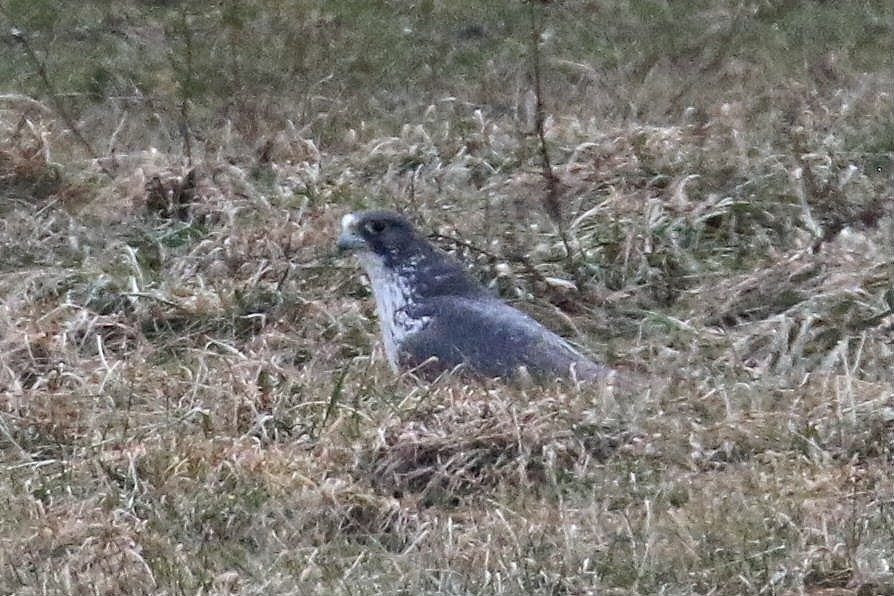
A gyrfalcon. (File photo)
It was raining and so warm the morning I wrote this column that I went out on the deck without a coat to refill a peanut feeder. We only put out peanuts in the mornings because they're costly, but at that time, blue jays put on a good show as they come in to grab them. I've seen a jay take three peanuts at the same time.
It was so unusually warm that mid-February day that snowdrops, small white flowers produced by bulbs, were blooming in the front yard. But, as often happens in the winter, the weather was going to turn on a dime. Dropping temperatures and snow were predicted for the next night.
As the day wore on I debated with myself about going for a second look at an extremely rare raptor that's been frequenting several places in the area.
A dark-phase gyrfalcon, a tundra breeder and the largest and most powerful falcon in North America, has been drawing birders from miles around and surrounding states.
But a lot of birders haven't found it and left disappointed. Although at times the gyrfalcon sits out in the open, most of the time it stays out of sight. Gyrfalcons eat big birds and small mammals, and they're incredibly adept at chasing prey at high speed flying close to the ground. So, they often stay hidden behind small dirt mounds.
To put into perspective how unusual it is to have a bird like this around, I've been in the birding world for more than 40 years and only once before have I seen gyrfalcons close to home. Thirty-five years ago there was an "invasion" of them into a quarry area of Lancaster County and I was incredibly fortunate at the time to see all three of them.
What was even more unusual was that all three color phases were represented - white, gray, and dark. But at the time I was just breaking into the birding community, so to speak, and I didn't really realize how lucky I was. And afterward the two women I went with seemed more excited to visit a local Amish cheese store than they had been searching for the falcons.
I decided not to go for the gyrfalcon again because the occupants of the homes near the fields where it's occasionally been seen may be getting tired of all the visiting cars. I'm not saying that anyone has blocked driveways or trespassed on private property, or at least I hope no one has, but it does happen.
When a bird this rare is found, its presence can draw in hundreds of people wanting to see it. And while I'm certainly not criticizing all photographers, the current availability of big cameras and powerful iPhones sometimes pushes people to get too close and subsequently chase the bird away.
Unfortunately, such has been the case this year at one of the spots in Pa. where a snowy owl has been wintering. And it's happened so much that one frustrated farmer painted a great-horned owl decoy white and put it in a different field than where the real snowy owl was.

Comment: See also this report from 2 months ago: Rarely seen white morph gyrfalcon from the high Arctic spotted in New Brunswick, Canada